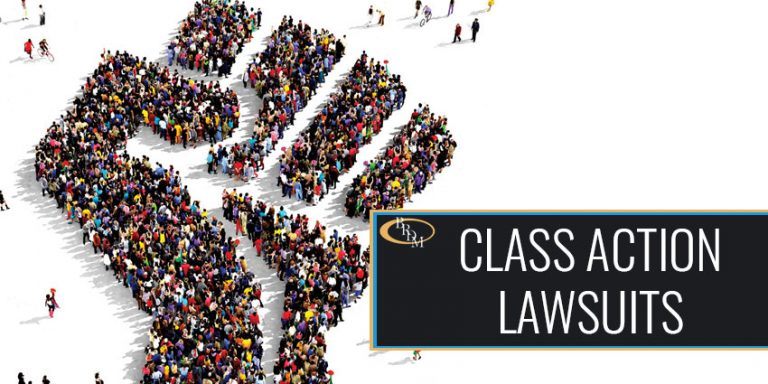Debunking Class Activity Suits: A Closer Check Out Lawful Proceedings
Class activity lawsuits can be complex and intimidating, often shrouded in a veil of secret for those not familiar with the legal process involved. Nevertheless, getting a deeper understanding of these suits is essential, as they function as a powerful tool for people to seek justice and hold corporations answerable. In this discussion, we will debunk class activity claims, taking a better take a look at the numerous aspects of the legal proceedings. From understanding the requirements for class activity eligibility to the role of course reps, and from the process of class qualification to the resolution of these legal actions, we will unwind the complexities and dropped light on the inner functions of this lawful mechanism. So, allow's dive into the world of class activity lawsuits and discover the details that exist beneath the surface area.
Recognizing Course Action Lawsuits
Recognizing Class Action Suit calls for a detailed evaluation of the lawful procedures associated with collective lawsuits. Class action claims are a kind of legal activity where a group of people with comparable insurance claims or grievances collaborate to initiate a suit versus a common defendant. This kind of litigation enables individuals with minimal resources to jointly seek justice, as it integrates the strength of several individual insurance claims into a solitary lawful action.
The procedure starts with the identification of a lead complainant or class representative who files the first problem in behalf of the whole course. The court then figures out whether the case satisfies the requirements for class certification, that include commonality, numerosity, typicality, and adequacy of representation. If licensed, the court informs possible course participants, giving them a chance to opt-out if they desire to pursue their cases independently.
Once the course is licensed, the lawsuits continues through numerous phases, consisting of discovery, motion practice, and, if required, test. The result of the legal action can cause a judgment or a settlement, which is binding on all course participants unless they select to opt-out. Course action lawsuits can include a large range of legal issues, such as customer protection, securities fraudulence, employment discrimination, and environmental damage.
Comprehending the subtleties of class activity suits is critical for both accuseds and complainants associated with cumulative litigation. It calls for a detailed understanding of the legal needs for accreditation, the legal rights and commitments of course participants, and the possible benefits and risks related to protecting or pursuing versus course action claims.
Identifying Course Activity Eligibility
To figure out whether a lawsuit certifies as a course action legal action, details standards have to be fulfilled. These criteria are created to guarantee that the situation can adequately represent the passions of a large team of individuals who have experienced similar harm or have been impacted by the very same problem. The essential element in recognizing class activity eligibility is the existence of a typical inquiry or issue that influences all potential course participants.
First of all, a course activity claim calls for numerosity, which implies there must be a substantial number of possible class members entailed. This guarantees that a course action is a reliable way to settle the insurance claims of a big group of individuals, instead of having each individual submit a private claim.
Secondly, there must be commonality amongst the claims of the possible class participants. This suggests that there need to be a typical question of legislation or truth that is main to the instance. If each possible course participant's insurance claim is one-of-a-kind and unconnected to the others, a class action may not be ideal.

The Function of Course Rep
Course reps play an essential duty in class action legal actions by standing for the passions of the entire course. These individuals are selected from within the class to act as the general public face of the claim and are accountable for making decisions on behalf of all class participants. The function of course reps entails different responsibilities and responsibilities throughout the legal process.
One of the main duties of course reps is to supply details and assistance to their fellow course participants. They function as a point of get in touch with and communication between the course members and the attorneys representing them. This includes keeping the class participants informed around essential updates, answering their inquiries, and addressing any kind of worries they might have.
Class agents also have the duty to proactively participate in the litigation procedure (Assertio class action lawsuit). This includes working carefully with the lawyers to develop legal methods, gathering evidence, and providing testament if required. They have to be proactively associated with all facets of the case to make sure that the very best interests of the entire class are represented
Additionally, course representatives are accountable for approving negotiations or various other resolutions gotten to in the lawsuit. They need to very carefully assess the regards to the negotiation and choose that is in the finest rate of interest of the entire class. This decision-making procedure needs mindful consideration and appointment with the course participants.
The Refine of Course Accreditation
The procedure of certifying a course in a course activity legal action entails a thorough examination of specific requirements to establish if the instance fulfills the necessary demands for class qualification. Course qualification is a critical step in the litigation process as it determines whether a legal action can proceed as a course activity, permitting a huge group of people with comparable cases to be represented collectively by one or a couple of individuals.
To acquire course accreditation, the complainant has to demonstrate that the recommended course satisfies certain requirements. These prerequisites generally consist of numerosity, commonality, typicality, and adequacy of representation. Numerosity requires that the course is so huge that joinder of all participants is not practical. Commonality requires that there are inquiries of legislation or fact typical to the class members. Typicality needs that the insurance claims or defenses of the class representatives are typical of those of the course. Adequacy of representation makes sure that the course reps will rather and effectively safeguard the rate of interests of the course.
If the proposed class fulfills the essential requirements,The court will scrutinize these requirements and the complainant's proof to determine. The court may likewise think about various other elements, such as whether a course action is the exceptional technique to resolve the conflict and whether the class is completely natural.

As soon as the court gives course certification, the lawsuit can continue as a course action, enabling the plaintiffs to jointly look for alleviation and possibly get a judgment or negotiation that benefits the entire course.
Dealing With Course Activity Lawsuits
Once class certification has been approved, the go following step in fixing a class activity lawsuit is to navigate the procedure of lawsuits or settlement arrangements. Litigation refers to the lawful procedures in court, where the plaintiff's attorney provides evidence and disagreements to support their cases, and the accused's attorney counters with their own evidence Go Here and disagreements. This process can include numerous stages, such as pretrial activities, discovery, and test.
On the other hand, settlement negotiations entail discussions between the parties to reach an equally appropriate resolution without going to test. Negotiation provides may be made at any phase of the litigation procedure, and if both celebrations concur, a settlement arrangement is reached.
Conclusion
In verdict, class activity lawsuits play a critical role in providing justice and settlement to large groups of people who have actually been harmed by the same entity. By accrediting a class and assigning class representatives, the legal process ends up being much more easily accessible and effective for the plaintiffs. Resolving these claims can be a facility and prolonged process, but it is essential in holding firms responsible for their activities and guaranteeing reasonable end results for all influenced parties.
From understanding the standards investigate this site for course action qualification to the duty of class agents, and from the procedure of course accreditation to the resolution of these suits, we will certainly untangle the complexities and dropped light on the inner functions of this lawful system. The essential variable in identifying course action eligibility is the presence of a typical inquiry or issue that influences all prospective course members.
If each possible class participant's claim is unrelated and special to the others, a class action may not be ideal.
Course agents play an important duty in class activity lawsuits by standing for the passions of the whole class.As soon as class certification has actually been provided, the following action in settling a class action lawsuit is to browse the process of lawsuits or settlement negotiations.